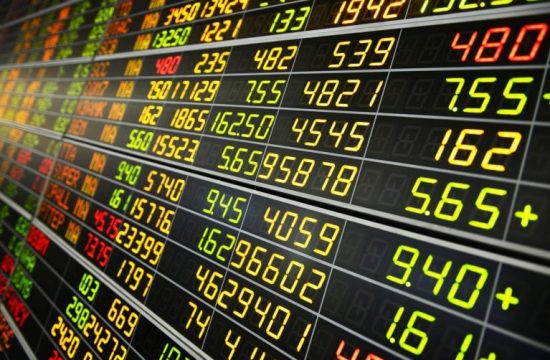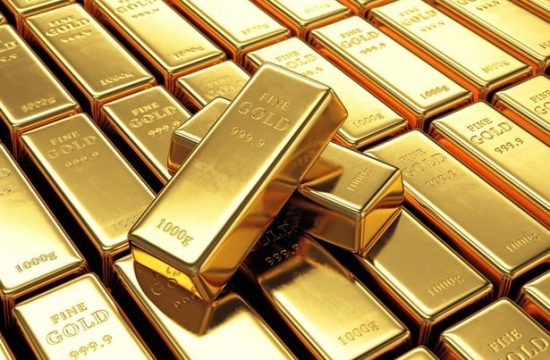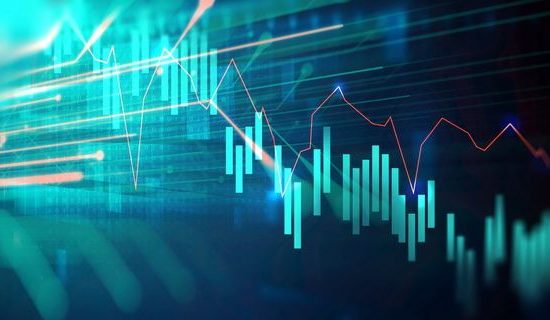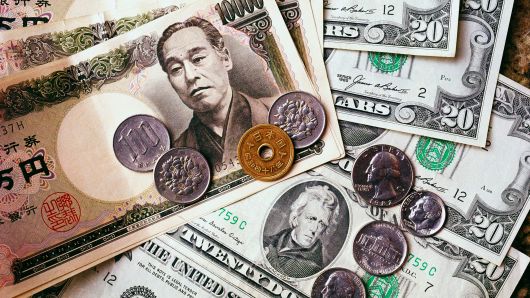Analysis provided by Ardu Prime
Ardu Prime is a leading provider of Forex, CFDs and crypto custody and exchange services. Ardu Prime gives access to more than 200 CFDs across various asset classes including commodities, US equities, indices, and many more. Ardu Prime places a strong emphasis on trading education, transparency and inclusivity. In line with these principles, the brokerage provides access to a choice of educational materials, market news and insights to give traders a head start on their trading journey.
In their latest analysis, Ardu Prime market analysts take a closer look at the behavior of gold throughout three pivotal moments for the global economy, identifying both safe haven characteristics and deviations from the standard pattern as they answer some key questions: “Is gold still a “reliable” safe-haven asset?” “To what extent?”
Background
Generally, a safe haven can be defined as an asset allowing investors to preserve wealth in times of financial turmoil. During periods of high inflation and economic uncertainty, investors usually turn to gold “for safety”, considering the yellow metal’s negative correlation with the US dollar¹ and stocks, which are considered riskier assets. The economic headwinds of the past decade have reinvigorated interest in gold as a potentially good investment.
In their study “Gold and financial assets: are there any safe havens in bear markets?”, Virginie Coudert and Hélène Raymond captured the bullion’s behavior during recession. The authors observe that in the short term, the correlation between stocks and gold is near zero in times of recession, which only qualifies gold as a “weak safe haven.”² The same holds true in times of bear markets against most stock indices. However, gold maintains its status as a strong hedge against the US stock index.
Nevertheless, every crisis episode is different, stirring different whirlwinds in the markets. Hence, the behavior of gold as a hedge or a safe haven differs every time. According to Coudert and Raymond, gold moves contrarian to some of the equity markets, in countries such as France, the UK and US in the longer term. However, the authors conclude, gold has its own risky characteristics in times of economic crisis, despite the diversification it offers. Below we take a look at the gold price movements during the most impactful economic events of the last fifteen years.
The fall of the Lehman Brothers, a momentous event for gold
The downfall of Lehman Brothers propelled gold to fresh tops. Between 2008 and 2018, the precious metal performed remarkably well, with prices shooting up nearly 60% higher on September 11, 2018, compared to September 12, 2008, just before the financial empire collapsed.
Gold’s price reached a fresh high at $1,920 in September 2011. When investor confidence took over the markets, gold turned bearish and even sideways, trading in tight range between $1,050 – $1,450 for more than six years.
If we dig deeper into gold’s behavior around the Lehman Brothers’ collapse, we can observe that the bright metal started rallying in the second half of 2007 when the world’s economy began showing signs of forthcoming turbulence.
Yet, when the Federal Reserve saved Bear Stearns investment bank in March 2008, the shiny metal plummeted from $1,011 to $747 on September 11, 2008, just before Lehman Brothers filed for bankruptcy on September 15, 2008, which spurred a massive sell-off in the stock markets, shutting down Wall Street for the first time in history. That is when the Dow Jones index tumbled 504 points, hollowing the global financial system³.
¹Hecht A. (2022). The Relationship Between Gold and the US Dollar, The Balance. Updated March 30, 2022. Available at https://www.thebalancemoney.com/the-relationship-between-gold-and-the-u-s-dollar-808978
²Coudert V., Raymond H. CEPII, WP No 2010-13. Gold and financial assets: are there any safe havens in bear markets? Available at http://www.cepii.fr/PDF_PUB/wp/2010/wp2010-13.pdf
³Egan M. (2008). Lehman Brothers: When the financial crisis spun out of control. CNN Business, published 11:32 AM EDT, Sun September 30, 2018. Available at https://edition.cnn.com/2018/09/30/investing/lehman-brothers-2008-crisis/index.html
After that ominous moment, gold edged slightly higher, from $748 to $766 on September 12, 2008, before rallying until September 29, when it rose to $905.
At the same time, almost in tandem with gold, the ICE Futures US Dollar index, DXY, which measures the greenback’s performance against a basket of six major currencies, climbed timidly 0.11% at 80.146 from 80.054, on September 11, 2008. On Friday, September 12, 2008, DXY fell 1.47% at 78.966.
Based on these considerations, we can only agree that gold’s status as a safe haven in times of upheaval is somewhat limited and should be treated with caution. Taking this rationale further, let us analyze what happened after the Lehman moment.
On October 24, 2008, gold lost its shimmer even more, bottoming to $681. Towards 2009, the situation changed again, with the precious metal turning bullish, however, not before September 2009 when it hit $1,000 an ounce. So, how could this happen?
The reason is simple. Being pegged to the US dollar, gold served as an invaluable source of liquidity in times of economic turbulence. In the wake of the Great Depression, as we now call the event, anyone who had invested in gold sold their gold for cash necessary to pay any dollar-denominated debts. Furthermore, when Lehman was liquidated, it also had to liquidate its positions, including gold. And this is the number 1 lesson Wall Street learned the hard way from what was probably the greatest economic crisis of our time.
Once the economic headwinds subsided and central banks started forging policies to mitigate the effects of the crisis by injecting capital into the worn-out banking systems, gold prices resumed their surge as the sell-off mood ruling the stock markets began to fade. The Fed trimmed interest rates to nearly zero. This was lesson number 2. But the gold price swings did not stop there, as the socio-economic and geopolitical landscape was only just beginning to change, and greater paradigm shifts were looming on the horizon.
Gold shimmers through the health crisis
Fast-forward ten years, the world goes head-first into another crisis, this time caused by the outbreak of the COVID-19 pandemic. Supply chains came to a halt as a series of lockdowns weighed down on the global economy. Investors’ reinvigorated interest in “safer” assets propelled gold to an all-time high of $2,030.60 per ounce in August 2020.
In their study, Correlation Between COVID-19 Cases and Gold Price Fluctuations, published in the International Journal of Mining, Reclamation and Environment, Roshan Gautam, Yoochan Kim et al¹. have shown there is a clear correlation between the spike in COVID-19 cases and the sharp increase in gold price. Using different statistical analyses, the authors revealed that a 1% rise in COVID-19 cases triggered a 0.0166% upturn in gold price. Considering the overwhelming average growth of 17.385 in infection cases per day at the peak of the pandemic (January 1, 2020 – March 31, 2022), the shiny metal also recorded a 0.2885% gain per day.
Despite gold’s attributed safe haven status, prices of the valuable asset took a blow upon the realization that the coronavirus would become a global phenomenon. The gold price movement through mid-February 2020, with gold on a low-motion uptrend, bolstered by two fundamental factors: 1. the global economic uncertainty boosting interest in safe-haven assets correlated with China’s shutdown hampering economic activity, the US-China trade war and the weakened eurozone; and 2. the low and sometimes negative yields on government-issued bonds.
However, it was a short-lived momentum for gold, which after peaking at a seven-year high at $1,703 per ounce in March 2020, it suffered again a massive hit on March 12, when the prospects of a US economic recession became impending, moving in the same direction with US equities. From this perspective, the yellow metal had a similar behavior to that of 2008, when it took a tumble in tandem with the US dollar and equities, contrary to its “traditional” safe haven characteristics.
Again, depleted mutual funds invested in gold and gold futures had to sell their gold to satisfy margin call requirements and raise cash to invest in US treasuries². Consequently, gold’s safe haven features should be balanced against the current economic context, which may not always fit the safe haven pattern. This brings us to the next point – “How reliable is gold as a safe haven?”
Is gold really a safe haven?
Historically, investors turn to gold when the markets take a negative turn. Despite its safe haven characteristics, we’ve seen that the precious metal proved to be virtually as risky as equities. Yet, this does not render gold unreliable. There are other contextual elements that must be factored in before qualifying the coveted asset as a not so safe haven.
The ongoing Russia-Ukraine war propelled gold to an all-time high of $2,070 per ounce. As soon as President Vladimir Putin announced the commencement of the “special military operation” in Ukraine in February 2022, Russia’s demand for gold grew five times faster than the same period a year earlier, data compiled by the World Gold Council shows³.
¹Roshan Gautam, Yoochan Kim, Erkan Topal & Michael Hitch (2022) Correlation between COVID-19 cases and gold price fluctuation, International Journal of Mining, Reclamation and Environment, 36:8, 574-586, DOI: 10.1080/17480930.2022.2077542.Available at https://www.tandfonline.com/doi/abs/10.1080/17480930.2022.2077542?src=&journalCode=nsme20
²S&P Global Market Intelligence. COVID-19 Impacts To Metals Prices: Volatility Is Here To Stay – Part 2. Available at https://www.spglobal.com/marketintelligence/en/news-insights/research/covid-19-impacts-to-metals-prices-volatility-is-here-to-stay-part-2
³World Gold Council (2022). Gold Market Commentary. Gold takes centre stage in February. Available at https://www.gold.org/goldhub/research/gold-market-commentary-february-2022
The same attitude was embraced by China, the world’s largest gold importer. In 2021, the country imported 818 tons of gold and consumed 80.1 more tons of the precious metal. With gold production drastically below demand, China resorted to imports to fuel its domestic needs.
However, in February 2022, gold buying arrived at a standstill as Chinese investors were more inclined to shore up profits and jewelers had already replenished their stockpiles, the World Gold Council noted. Yet, the beginning of 2023 reignited Chinese investors’ interest in gold, with the SHAUPM (Shanghai Gold Price Benchmark PM) in RMB recording a 2% rise in January and a 5% increase in the USD-denominated LBMA (London Bullion Market Association) Gold Price AM, the gold market development organization pointed out, and may continue to rise further¹.
¹Jia R. (2023). China’s gold market in January: gold reserves continued to rise. World Gold Council, posted 13 February, 2023: 09:00. Available at https://www.gold.org/goldhub/gold-focus/2023/02/chinas-gold-market-january-gold-reserves-continued-rise
Final considerations
However, a good definition of gold’s safe haven appeal was the precious metal’s recent rally above the $2,000 territory fueled by turbulences in global banking sector after the sudden collapse of the tech-oriented Silicon Valley Bank and the acquisition of the Swiss-giant Credit Swiss from its biggest domestic competitor UBS. On March 13, Spot Gold’s price recorded its largest weekly increase (+6.52%) since the pandemic period, as investors turned to safe-haven assets, may indicate that gold is still considered a safe-haven asset.
Despite its contradictory price swings, gold remains a solid investment, yet one that deserves closer attention in terms of its safe haven characteristics, which given the tantalizing paradigm shifts that we have witnessed so far, may vary in the long term.
Ardu Prime is a leading provider of Forex and CFD trading services, offering exposure to over 200 CFDs. For more information about the company and its offering, visit https://arduprime.com/
DISCLAIMER: The information provided does not constitute, in any way, a solicitation or inducement to buy or sell securities and similar products. Comments and analysis reflect the views of ARDU PRIME at any given time and are subject to change at any time. Moreover, they can not constitute a commitment or guarantee on the part of ARDU PRIME. The recipient acknowledges and agrees that by their very nature any investment in a financial instrument is of a random nature and therefore any such investment constitutes a risky investment for which the recipient is solely responsible. It is specified that the past performance of a financial product does not prejudge in any way their future performance. The foreign exchange market and financial derivatives such as futures, CFDs (Contracts for Difference), warrants, turbos or certificates involve a high degree of risk. They require a good level of financial knowledge and experience.
RISK WARNING: Forex and CFDs are leveraged products and involve a high level of risk. It is possible to lose all of your capital. These products may not be suitable for everyone and you should ensure that you understand the risks involved. Seek independent advice if necessary.












